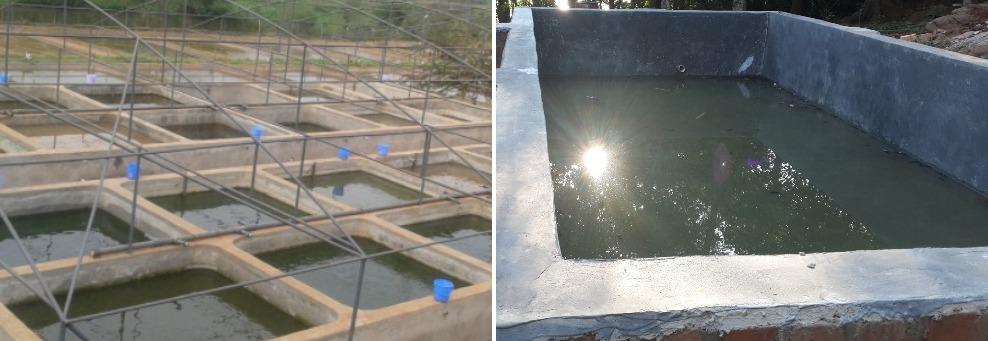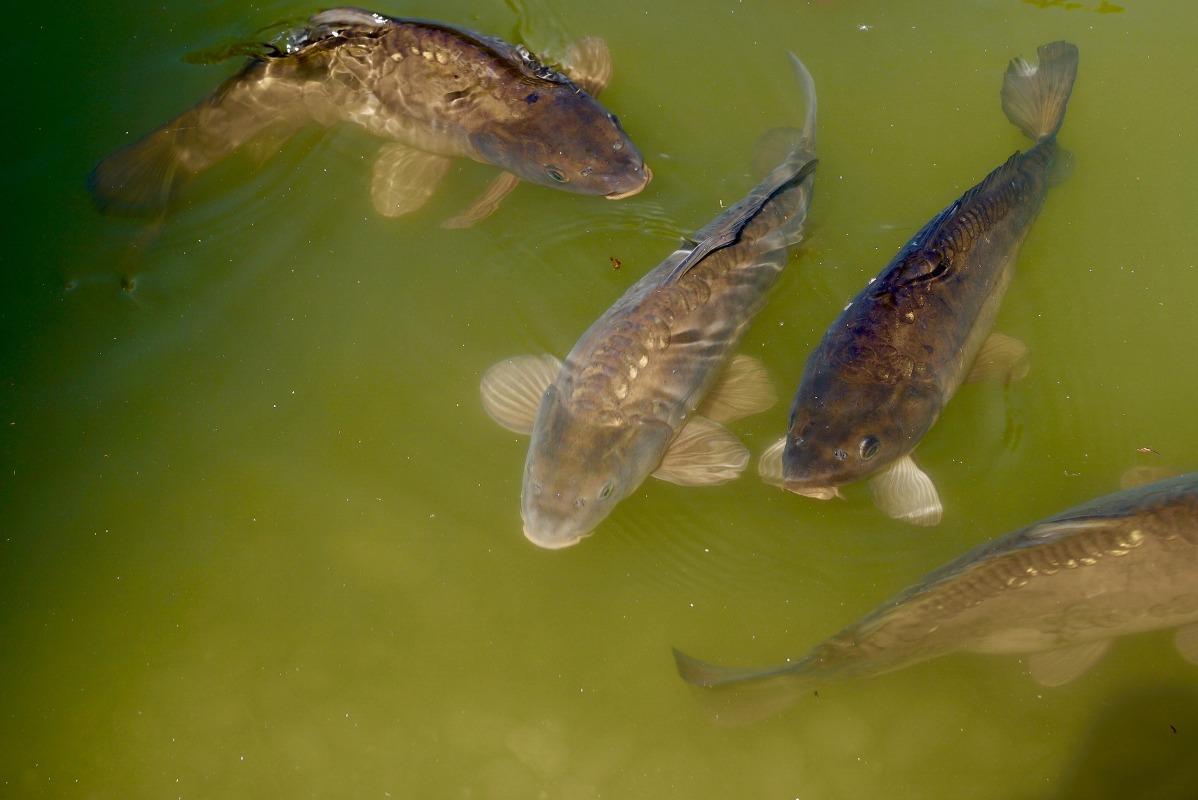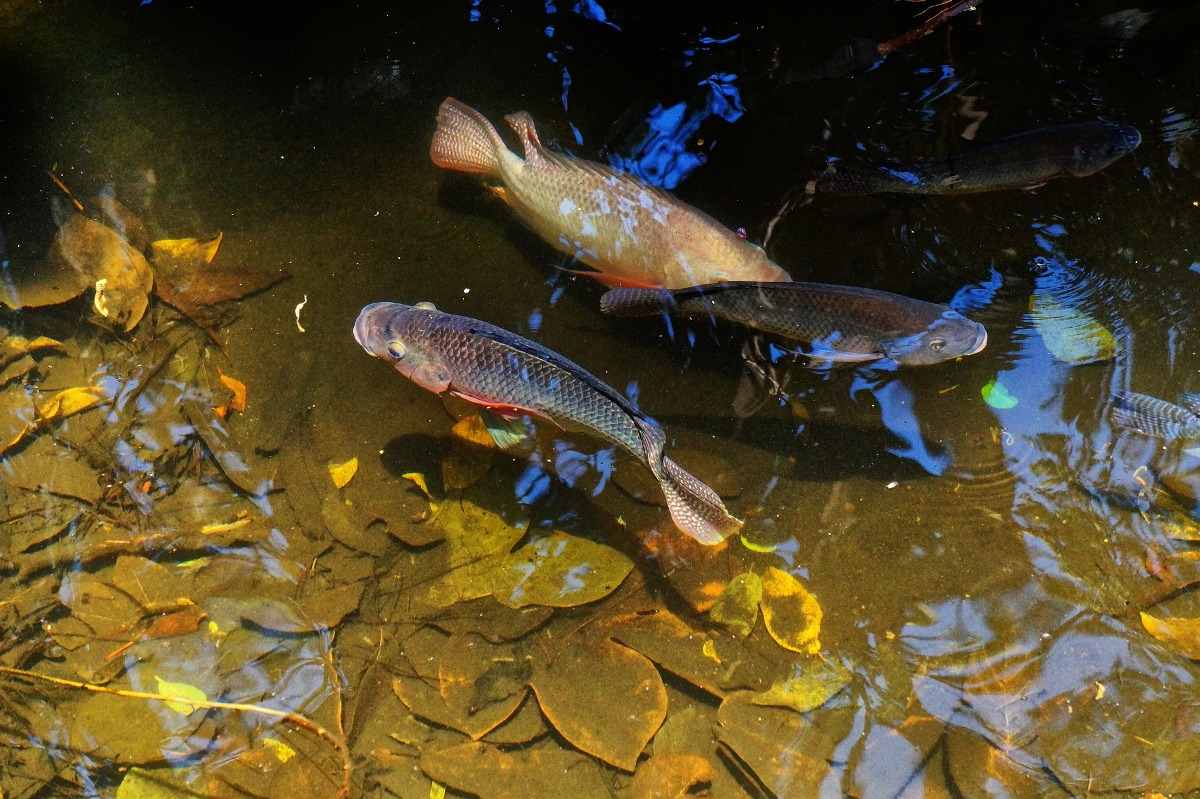Introduction: Hello friends we are back with a wonderful infromation on how to build a fish pond with concrete. Concrete ponds are usually constructed with concrete and reinforced to make them stronger. Construction of concrete ponds is often handled by highly skilled professionals in construction engineering. For any concrete pond to stand the test of time it should be well constructed. The use of blocks for the construction of concrete fish tanks is not usually encouraged. What are we waiitng for? Let’s get into the details of how to build a fish pond with concrete.
A step by step guide to how to build a fish pond with concrete
Concrete tanks for fishes can be constructed below or above the earth’s surface. Concrete ponds are most popular in urban areas where fish farming is practiced. Concrete ponds can be “cured” and made safe for fish without special coatings. Keep the newly constructed fish pond filled for a week, then drain and refill. After 2 weeks, drain and refill again. After 3 weeks, drain and refill again. Wait one additional week and drain and refill a 4th time.
Concrete ponds are used for intensive fish farming; concrete walls or banks eliminate erosion due to currents caused by mechanical aeration, waves generated by the wind and fish activity (notably nesting behavior). This type of fish pond is more expensive to build and, therefore, should be made profitable by a higher production per volume utilized. Conversely, the firmer walling reduces maintenance and re-building costs that will be essential after a few years of operation,

This type of pond is smaller than earthen ponds and must not exceed 1,000 m2 surface areas. The bottom can be in concrete but for reasons of construction costs, only if the concrete fish pond size does not exceed 200 m2. Brick or stone walls should have strong foundations and, if they are built with bricks or blocks, they should be plastered, avoid the effects of erosion.
You should not miss the Rabbit Farming Business Plan.
Importance of building a concrete fish pond
Concrete fish ponds are generally constructed to culture fish were flowing streams of water or river is not available. Thus, concrete fish ponds afford us the opportunity of culturing fish around our homes and immediate surroundings such as school and college premises, office areas, industrial and commercial centers, etc.
And it can be constructed purposely for storing live fish till needed. Such life fish must have reached table size (that is at least 400-500 grams in weight) before storage. Concrete fish ponds are useful for fingerlings production especially in the case of fish species which breed easily in captivity, for example, Tilapia species, clarias species.
Digging the concrete pond for fish culture
Concrete ponds are generally quite large and deep and therefore a large hole has to be dug and a lot of earth needs to be excavated. The easiest process is to hire a small mechanical digger or JCB; although access into the garden can sometimes be an issue. As the fish pond walls will probably be quite sheer there is sometimes the problem of collapsing. If the soil is quite dry the walls can need to be temporarily held in place with sheets of plywood, pinned in place with long stakes bedded into the pond base. There is the removal of the earth to consider. Skips can be quite expensive, but there tends to be a slight cost increase in the price for larger skips.
Waterproofing fish pond
Concrete is porous, it absorbs water and allows it to seep through and away from the fish pond. It contains lime which, if allowed to leach into the pond water, will adversely affect the pond’s pH. There are a few options obtainable when choosing how to waterproof a concrete pond. The easiest and generally cheapest option is to fit a flexible pond liner.

The pond liner can be fitted in the same way and it would if you were building a sunken liner pond. This can be fairly problematic if there are bottom drains, and return hoses, etc built into the pond base or walls as the pond liner will have to be cut and securely sealed around any fixtures. Also, as most concrete ponds tend to be fairly square the liner could have to be pleated; this could make hard-to-clean folds in the liner which may build up with debris or harbor parasites. If the walls have not been rendered or are not entirely smooth, it is generally advised that a more heavy-duty underlay is used to protect the liner from the rough brickwork. The liner itself may have to be fairly heavy-duty by the volume of water that the fish pond will hold. Another process is to fiberglass the pond interior.
You may also like the Loan for Sheep Farming in India.
Design elements of concrete fish ponds
Concrete fish ponds can be made from;
A thin layer of concrete applied to a shape formed from earth – This construction process is relatively quick with no reinforcing rod used. The mix is high in sand content with no aggregate or coarse material as the concrete is used as a thin plaster skin. The shape of the pond is not limited by using this process; it can be quite informal with an irregular shape that looks quite natural. This construction method wants to use heavy clay soils as light loamy soils will dry out and shrink away from the concrete skin giving no support.
Concrete blocks, slabs or earthen bricks cemented together – This process of construction is also quite quick as you are grouting the blocks or bricks together. The pond shape is somewhat limited because of the shape of the raw materials but creativity will always overcome that. Some hollow concrete blocks aren’t waterproof so a thin plaster skin of cement can need to be applied to the inner pond surface. The water seepage would be slow, but if the blocks filled with water and the water froze, it would blow them apart.
Concrete poured into boxing – This method is quite labor-intensive, expensive and wants a reasonable level of knowledge of concrete construction methods. The usual concrete mix is about 1 part cement, 2 parts sand and 3 parts aggregate poured at one sitting. If parts are poured separately and tiny cracks form between the components causing leaks.
Pre-made water troughs – They are generally round or oblong and are used on farms for watering stock. Design options are limited with size being about the only other option obtainable. Brass fittings are generally fitted for plumbing purposes, but the small amount of brass in contact with the water doesn’t seem to affect the fish.
Concrete as a material for fish pond construction
Concrete ponds are constructed using cement, blocks, and aggregate of appropriate ratio. A concrete pond can be classified in different ways. They are;
- Stagnant concrete pond,
- Free flow concrete pond and
- Water recirculatory concrete pond
How to build a Stagnant concrete fish pond
In the stagnant concrete pond, water in the fish pond is seldom replaced. The concrete pond is cheaper to construct with limitation in the quantity of fish stocking capacity. A pond of 2m x 5m capacity could not stock more than 600 fish. Fish growth cannot be as fast as expected due to poor water conditions. It could elongate to up to 9 months to reach the desired table size of 1.0kg.
Free flow concrete pond
This type of pond is suitable for quick response grow-out fish and the scope of this work will be centered on this pond. The pond construction includes the water flow-out channel. Water flow is regulated and this continuous at a stipulated period. This ensures water freshness and turbulent that creates the fish agile for improved feeding rate. A free flow pond of about 2mx5m capacity could stock between 1,000 and 1,800 fishes given space requirement of between 0.005m2 to 0.01m2 per adult catfish. The problem of the pond is that water wastage can be on the high side. This will be possible where constant water supply is guaranteed.
How to build a water recirculatory concrete fish pond
The construction of this type of pond includes a complete water refining or filtration system. This system involves high water efficiency. Water in storage tanks at elevated height flows freely into the concrete pond. Wastewater out of the fish pond is either stored in another chamber or passed directly through a bio-filter re-circulation and it is a continuous action. This type of pond is the most advanced in water efficiency, stocking capacity, water quality and percentage of dissolved oxygen in the pond water among other attributes.
Incase if you miss this: Solar Drip Irrigation System Benefits.

Procedure for building a concrete fish pond
The basic construction of a concrete fish pond follows that of the liner ponds. The concrete must be 4 to 6 inches thick. Once the pond dimensions are established and an outline laid out, dig out the soil for the entire pond. Forms should be built in place to hold the concrete while it dries and cures. Concrete reinforcing bars should be cut to size and fitted into the construction.
The pond must generally be poured all in one day and in one piece, or if large, in sections. Start with the bottom of the pond, then the sides, shelves, and, lastly, the top and any coping around the edge. Any junctions of concrete ponds poured in sections are critical as the site of future leaks and weakness to the shifting aspects of the soil. An alternative is to pour the pond without forms and slope to the walls and pour the concrete thicker to hold the concrete in place. However, this method can produce weakness in the concrete itself due to low density and air pockets as well as being a problem to plant and maintain.
Once the pond is built, it should be treated to correct the basic nature of concrete which would affect the pH of the water. The pH level of the water may need periodic adjustments for some time after construction. Lastly, the color of concrete should be changed for the pond to look right. Then apply a pool paint or masonry sealant containing a dark pigment. This will conceal the bottom and moderate the pH level of the pond.
Select a suitable area for your pond
You will want a filter, pump or both, so make sure there’s an electrical power point nearby. Try to place the fish pond away from trees; especially if they drop leaves, you will be creating a lot of maintenance removing them from your pond. Tree roots from close trees and shrubs could also cause issues.
Excavate the pond
Your pond must be dug with a variety of depth levels so you can utilize these levels as shelves for water plants. To build these shelves, you want to hand dig the edges of the pond with a shovel to get the chiseled edges you desire. Plan on having a perimeter edge at least 10cm above the desired water level of the pond. Allowing for 200mm of concrete, dig your hole to about 800mm deep in the middle, so you will end up with water 600mm in depth.
Allow for the overflow drain
To make sure that when the pond gets full during heavy rain, it does not flood the garden, you will have to make sure you install a drain that connects to the stormwater pipe. The water level you desire in the pond must be about 25mm below the level of the drain.
Allow for your filter
Filters are required if you are building a concrete fish pond, to maintain the water as clean as possible. There are many on the market, some have biological filters, with the more expensive ones allowing for easy cleaning and ‘backwashing’.
Pour the concrete
It is difficult to gain good structural integrity of the concrete across a large area by mixing up concrete from bags yourself. And a truck delivered the concrete pre-mixed with a waterproof additive which was then poured in using a wheelbarrow and ‘trowelled’ into place.
Add river pebbles
River pebbles provide surface area for necessary bacteria as well as adding natural beauty to the concrete pond. Start by placing the pebbles on the vertical walls, working your way down, stamping them into the concrete as it is still wet; you could also add some larger rocks if you wish as focal points. Once the walls have been covered, fill the horizontal areas with pebbles to a depth of 500mm.
Install the pump and filter
Typically your pump sits in the pond at its deepest point and pumping the water up through a filter which is then returned to the concrete pond by way of a waterfall. In this case, a ‘swale’ was formed to provide a creek bed; also covered with river pebbles that drain into the major pond.
Advantages of concrete fish pond
- The concrete pond is easy to manage; e.g. counting, sorting, sales and other management practices.
- It is better for the production of fingerlings and also juveniles.
- It can be constructed on dry land and it cannot be flooded.
- Diseases are easily detected and controlled in a concrete pond.
- Predators can be kept away and easily controlled.
- Concrete ponds do not want demudding.
- The waste feed can easily be discovered in concrete fish ponds.
- The growth of fishes can simply be monitored.
That’s all folks about how to build a concrete fish pond. Fish farming is fun and profitable. You may be interested in Duck Farming Basics, Feeding, Breeding, Housing.
Please send me a copy of the process of fish farming in ponds
This is wonderful
Very educational program
thanks alot for that amazing data
Thank you for this very educational video. I am planning to build a couple of 3mx 3m in Laguna.
This a very informative and very impressive blog for pond owners.